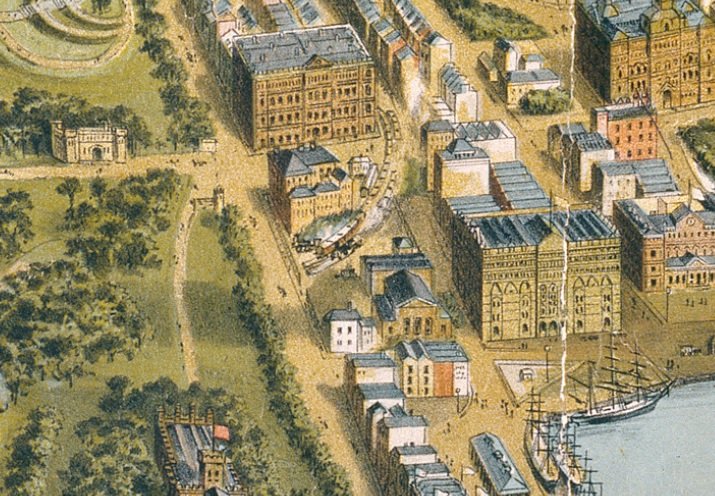The Dictionary of Sydney was archived in 2021.
Detail of birdseye view of Sydney, showing the Bridge Street tram yard 1888

By
From the collections of the
(Detail from 'The City of Sydney [a bird's-eye view]' 1888)

